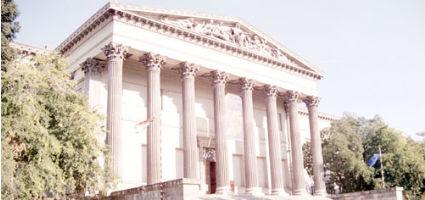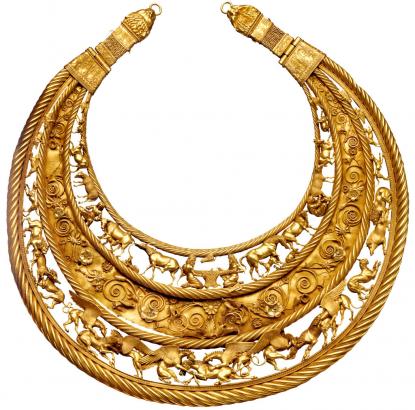2024. April 20. Saturday
Hungarian National Museum - Budapest
 |
Address: 1088, Budapest Múzeum körút 14-16.
Phone number: (1) 338-2122
E-mail: info@hnm.hu
Opening hours: Tue-Sun 10-18
|
The exhibition has closed for visitors.
2009.03.25. - 2009.05.31.
Museum tickets, service costs:
|
Ticket for adults
|
1100 HUF
|
|
|
Ticket for students
|
550 HUF
|
|
|
Ticket for soldiers
|
550 HUF
|
|
|
Ticket for pensioners
|
550 HUF
|
|
|
Ticket for families
(2 adults + children)
|
1150 HUF
|
/ family
|
|
Individual guide
|
400 HUF
|
/ capita
|
|
Group guide
(max. 5 people)
|
1800 HUF
|
/ group
|
|
Group guide
(11-15 people)
|
6000 HUF
|
/ group
|
|
Group guide
(max. 15 people)
|
5500 HUF
|
/ group
|
|
Group guide
(16-25 people)
|
9700 HUF
|
/ group
|
|
Group guide
(1-5 people)
|
1500 HUF
|
/ capita
|
|
Group guide
(6-10 people)
|
13000 HUF
|
/ group
|
|
Group guide
(11-15 people)
|
16000 HUF
|
/ group
|
|
Group guide
(16-25 people)
|
24000 HUF
|
/ group
|
|
Group guide for students
(max. 25 people)
|
4500 HUF
|
/ group
|
|
Group guide for students
(max. 15 people)
|
6000 HUF
|
/ group
|
|
Group guide for students
(max. 25 people)
|
12000 HUF
|
/ group
|
In the 8th century BC, the Eurasian steppe was conquered by a new horseriding nomadic population, the Scythians. They used to build enormous burial mounds above their princes' graves and bury their dead with exquisite golden objects. Their precious-metal work was the zenith of nomadic art.

This exhibition at the National Museum displays the most significant relics and stages of Scythian art and culture, including more than 1,300 artworks of museums in Germany, Russia, Romania and Ukraine as well as their own collections. Special emphasis is put upon the cultural and economic relations between Asia and Europe developed by this mysterious ancient group.

This exhibition at the National Museum displays the most significant relics and stages of Scythian art and culture, including more than 1,300 artworks of museums in Germany, Russia, Romania and Ukraine as well as their own collections. Special emphasis is put upon the cultural and economic relations between Asia and Europe developed by this mysterious ancient group.
